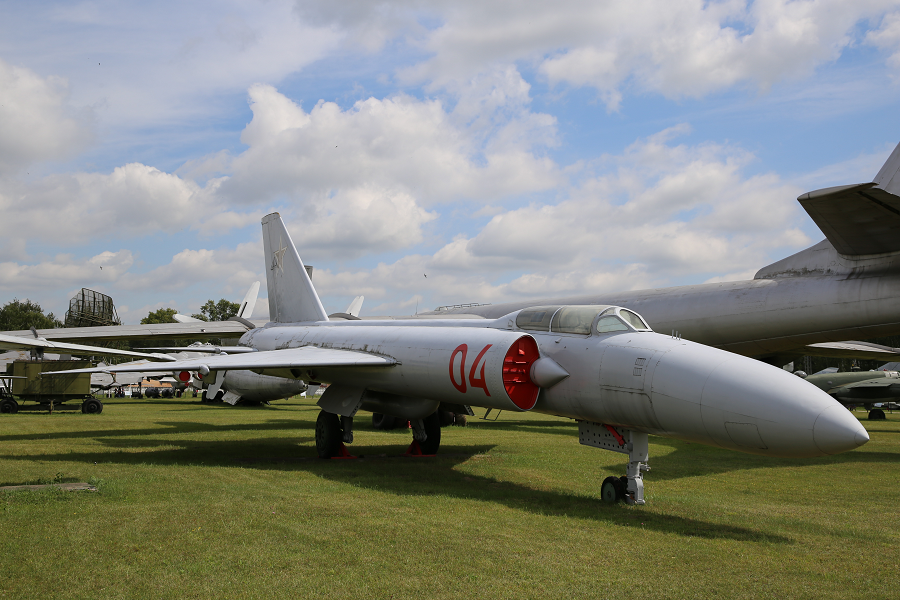La-250. A Soviet experimental supersonic interceptor from 1956. Flight range – 2000 km, max. speed 2000 km/h, ceiling – 18000 m
The Lavochkin La-250 “Anakonda” was a high-altitude interceptor aircraft prototype developed in the Soviet Union by the Lavochkin design bureau in the 1950s. Its nickname “Anaconda” was invented during the flight test and referred to both the elongated body shape as well as the relatively critical flight characteristics of the machine.
By the mid-1950s, it became obvious that subsonic cannon-armed fighters such as the Yakovlev Yak-25 would be unable to intercept fast high-altitude targets like the upcoming generation of strategic jet bombers. Consequently, in 1953 Lavochkin OKB proposed addition of an air-to-air missile system to the Berkut air-defense system. Tasked with defense of Moscow, the Berkut system consisted of a large network of radars and surface-to-air missile sites as well as ground-controlled interceptor aircraft.
Lavochkin’s proposed missile, the G-300 utilized a guidance system based on vacuum tubes and was so heavy (about 1,000 kg (2,200 lb)) that no fighter in the Soviet arsenal could carry it. Instead, a Tupolev Tu-4 bomber (Soviet version of the Boeing B-29 Superfortress) was modified to carry four G-300s under the wings, with the whole system receiving designation G-310. For all this trouble, G-300 was expected to have a range of only 15 kilometres (9.3 mi) and a ceiling of 20,000 metres (66,000 ft). Although G-310 made ten flights in 1952, the system was abandoned as impractical.
In November 1952, the Soviet government ordered development of Kompleks K-15 (Complex K-15, a notion analogous to USAF’s “weapon system” concept). K-15 was to consist of an “interceptor 250” (later designated La-250) carrying “Type 275” guided missiles.
La-250 had to be able to intercept targets flying at 1,250 km/h (780 mph), Mach 1.18) at 20,000 metres (66,000 ft) up to 500 kilometres (310 mi) from the airbase. Initial guidance was to be from Vozdukh-1 ground control with terminal onboard radar guidance for the last 40 kilometres (25 mi) and automatic missile firing by the fire control system when in range.
Missile “275” was projected to weigh 870 kilograms (1,920 lb) and, powered by a liquid fuel rocket motor, its top speed was to exceed 3,900 km/h (2,400 mph). With a 125 kilograms (276 lb) conventional warhead, it had a projected lethal radius of 50 metres (160 ft). La-250 was to carry two “275” missiles semi-recessed into the underside of the fuselage in a tandem arrangement.
The first flight took place on 16 July 1956 by Andrei G. Kochetkov.












